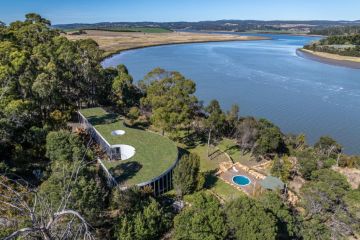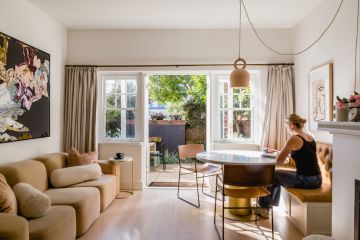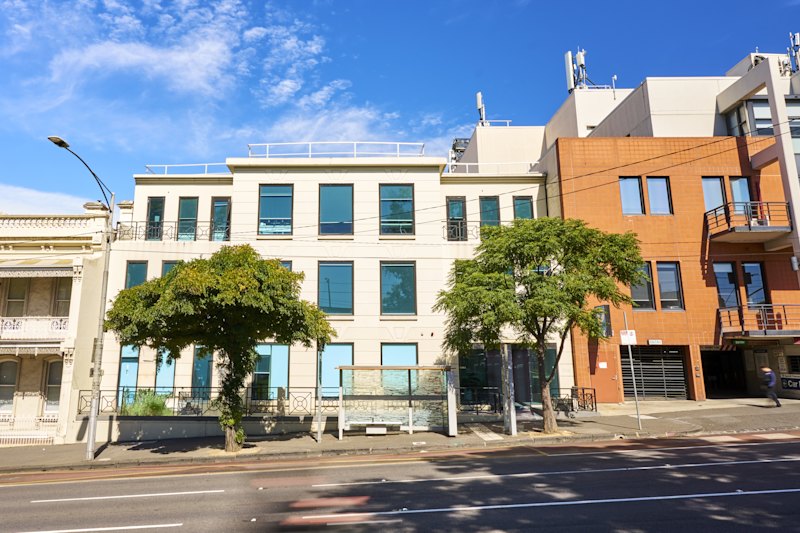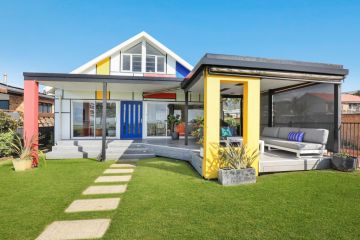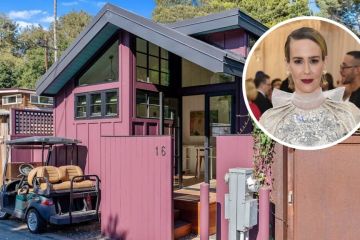Home is where the yurt is: Four alternatives to a traditional house
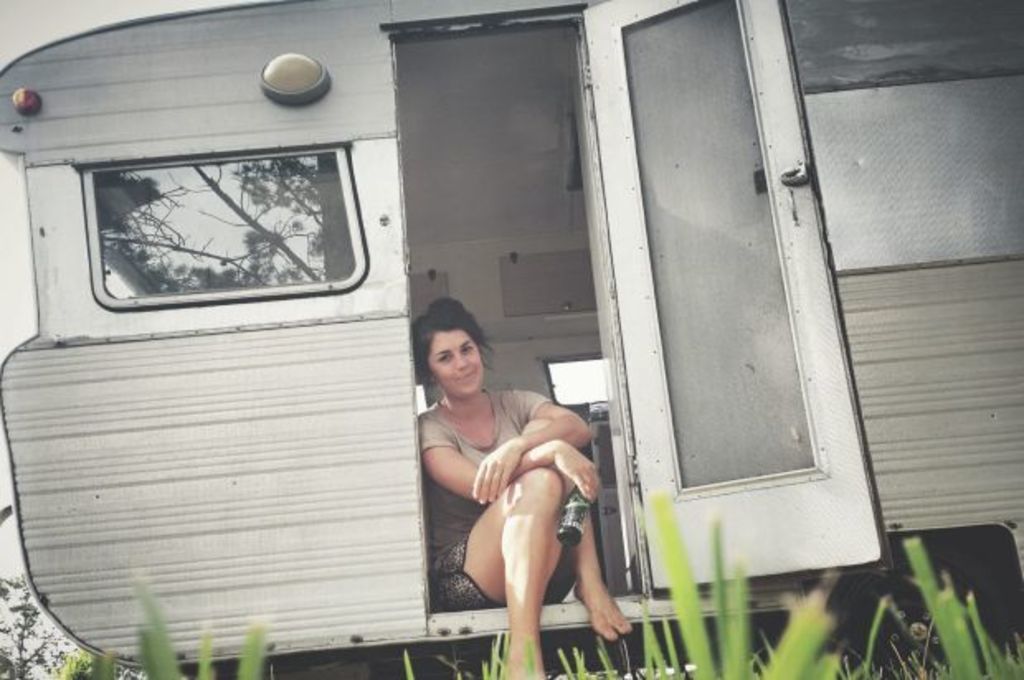
The fair majority of us, if we can afford it, tend to shackle ourselves to a hefty mortgage that can take decades to pay off.
But plenty of people choose to take a more unconventional housing route, either to avoid a mortgage altogether, or lessen the financial strain. We meet four people who have created awesome alternatives to a traditional living arrangement.
Vinnie the Valiant
Emily Uebergang has spent the past year paying $20 a week in utilities to live in her caravan “Vinnie” on a mountain property in rural New South Wales.
The 28-year-old had been sharing the property’s main house with her friend – also her partner in a small business raising chickens. However, when her housemate and her partner announced they were expecting a baby, Uebergang was keen for her own space.
She quickly snapped up a 1960s caravan on Gumtree for $1800, and towed it all the way from Canberra to the property in Elands.
Uebergang is just about to lock up the caravan for now and go house-sitting, but she’s enjoyed the past 12 months. “It felt like I was on permanent holiday. I literally woke up to this vista of the hills around me,” she says.
That was perhaps with the exception of March, when it rained non-stop and “cabin fever” hit.
- Related: Inside the leafiest home in Australia
- Related: Aussies on the reality of living in ‘paradise’
- Related: One couple’s solution to the housing crisis
For now, Uebergang has no desire to buy a conventional house.
“I’m young, single, free,” she says. “I have people telling me it will hit me at some point. If it does, fine, but right now it’s not on my agenda.”
Life in a shipping container
 Nick’s Tasmanian “surf shack” was created from an old 20-foot shipping container.
Nick’s Tasmanian “surf shack” was created from an old 20-foot shipping container.
Nick’s Tasmanian “surf shack” – which he created from an old 20-foot shipping container – is undeniably Instagram-worthy.
But the 36-year-old says that while it’s quirky and fun, it’s also just a practical response to a lack of housing affordability.
Nick made the move from Melbourne to coastal Tasmania late last year, lured by cheaper property options and great surf.
Once there, he spent $350,000 on a three-bedroom house with coastal views, and listed it on Stayz and Airbnb.
 Nick moved to Tasmania in late 2016 and renovated his shipping container, which came with the property he bought.
Nick moved to Tasmania in late 2016 and renovated his shipping container, which came with the property he bought.
“I started renting the house out and it was quite successful. Handling the mortgage on my own was quite difficult,” says Nick, who spent most of the first summer camping.
He has since renovated the shipping container, which came with the property, living in it between travels while renting out his main house full-time.
Nick, who prefers not to use his surname because living in a shipping container in this way is technically illegal, says he would prefer to live in the main house, but anticipates he’ll stick to this arrangement for another five years.
“It definitely frees me up mentally and financially,” he says.
“I don’t want my lifestyle to be controlled by my living arrangements. I just want to think creatively about how I can try and do both.”
The suburban yurt
 Warren Fereday and his 5.2-metre yurt. Photo: yurtsaustralia.com.au
Warren Fereday and his 5.2-metre yurt. Photo: yurtsaustralia.com.au
When Warren Fereday and his wife were separating about two-and-a-half years ago, it was a bit of a sticky situation.
The carpenter didn’t have a lot of spare cash, as a prolapsed disc had recently ended his days working in construction, but he didn’t want to move away from their daughter, now 11-years-old.
“Home life wasn’t comfortable at that point. I wanted a space within my home that would belong to me, that my daughter could share,” says Fereday.
“Rather than leave and go and find a unit and be stuck in four walls, one night I just thought, you know what, I’m going to buy a yurt, make a space in the garden.”
So Fereday bought a 5.2-metre yurt and installed it on their suburban block on the outskirts of Noosa.
 Warren Fereday’s yurt includes a queen size bed, a bar fridge and even a freestanding bath. Photo: yurtsaustralia.com.au
Warren Fereday’s yurt includes a queen size bed, a bar fridge and even a freestanding bath. Photo: yurtsaustralia.com.au
The yurt, which includes a queen size bed, a bar fridge and even a freestanding bath, is an unexpected joy to live in, he says. “It’s amazing.”
There’s an outdoor kitchen, and power is supplied for now via an extension lead.
Fereday continues to split the mortgage on the main house 50:50 with his wife, and they still get along well as friends.
“The reason we chose to do what we’re doing is because we’re still invested in something,” he says. “We’re paying the mortgage; both of us are going to reap the rewards later on.”
Fereday was so inspired by his new living arrangement that he’s since set up a business selling yurts for anyone interested in following suit.
Welcome to tiny town

The Francis’ tiny home.
Necessity is the mother of invention, or so the saying goes.
So when Sallie Francis and her husband Ryan kept missing out on buying “conventional” houses, they were forced to think a little differently. Especially as Ryan found himself out of work for seven months.
“We were renting a house for $470 a week,” says Francis. “We weren’t actually getting anywhere; we were going backwards.”
“I guess during that time we started really evaluating what we needed and what we wanted … and it was a lot different to a big four, five-bedroom house or a big $500,000 or $600,000 mortgage.”
After watching YouTube videos of tiny houses, Francis was sold on the idea.
Since then, the family has moved to a friend’s property, where they are paying cheap rent in return for permaculture design (which Francis is studying) and childcare. They’ve also been building their own tiny house, which they’ll move into within a few weeks with their daughters, aged three and four.
It’s cost the family $21,000 so far, and they’ll park it temporarily on a friend’s property near Maroochydore, before hopefully buying their own land and building something more permanent – which will be deliberately smaller than the average home.
We recommend
We thought you might like
States
Capital Cities
Capital Cities - Rentals
Popular Areas
Allhomes
More
